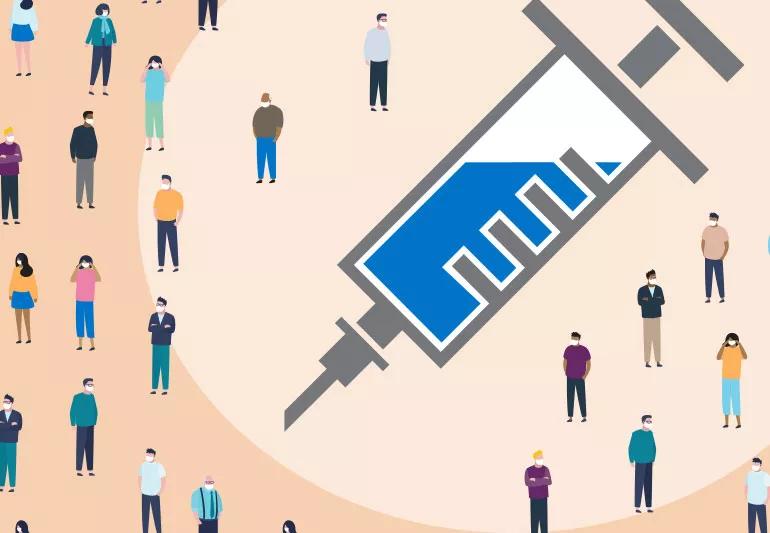Advertisement
The short answer from an immunity and pulmonary medicine physician

A: A vaccinated person acts as a barrier to slow and prevent the virus from continuing to spread. The ultimate end goal is to get as many people vaccinated as possible so that more people are protected. The entire population benefits from a high vaccination coverage, especially those who are most at risk and vulnerable.
Advertisement
Cleveland Clinic is a non-profit academic medical center. Advertising on our site helps support our mission. We do not endorse non-Cleveland Clinic products or services. Policy
Once a population reaches a point of collective immunity where the disease is no longer likely to spread, it reaches the herd immunity threshold. The estimate for COVID-19 is that roughly 70% to 85% of the population will need to be vaccinated to reach the herd immunity threshold, although this will likely be a moving target as we move into different stages of the pandemic. (In contrast, the flu needs between 33% and 44% vaccinated to reach the herd immunity threshold.)
It’s a safer place to live when you have a high vaccination rate and we hope that everyone will take the vaccine when they’re eligible to receive it.
– Serpil Erzurum, MD, Chair of the Lerner Research Institute.
Learn more about our editorial process.
Advertisement

Most routine vaccines are safe for people living with multiple sclerosis — but be sure to talk with your care team about your needs

The medication is ineffective and — in the case of animal ivermectin — potentially dangerous

Updated vaccinations are recommended to better protect against the evolving virus

Enteroviruses are often to blame for summer colds, leading to a runny nose, sore throat and digestive symptoms

Redness, swelling, itching and rash can happen when your body’s immune system reacts to the vaccine injection

Studies suggest 1 in 5 people infected with the coronavirus never develop symptoms

An increased risk of blood clots can last for nearly a year after a COVID-19 diagnosis

COVID-19 may be associated with tinnitus, but research is still ongoing

Focus on your body’s metabolic set point by eating healthy foods, making exercise a part of your routine and reducing stress

PFAS chemicals may make life easier — but they aren’t always so easy on the human body

While there’s little risk in trying this hair care treatment, there isn’t much science to back up the claims